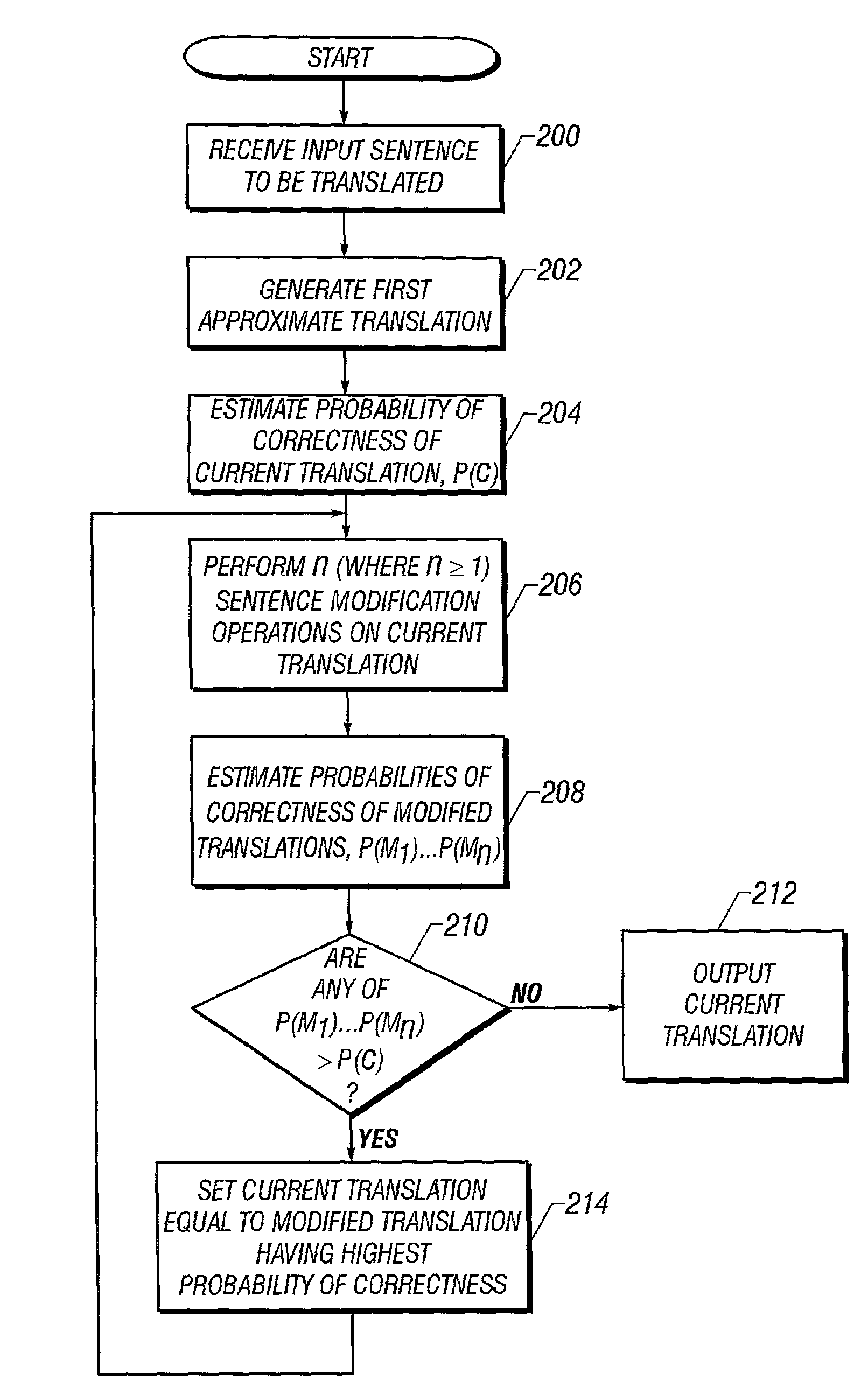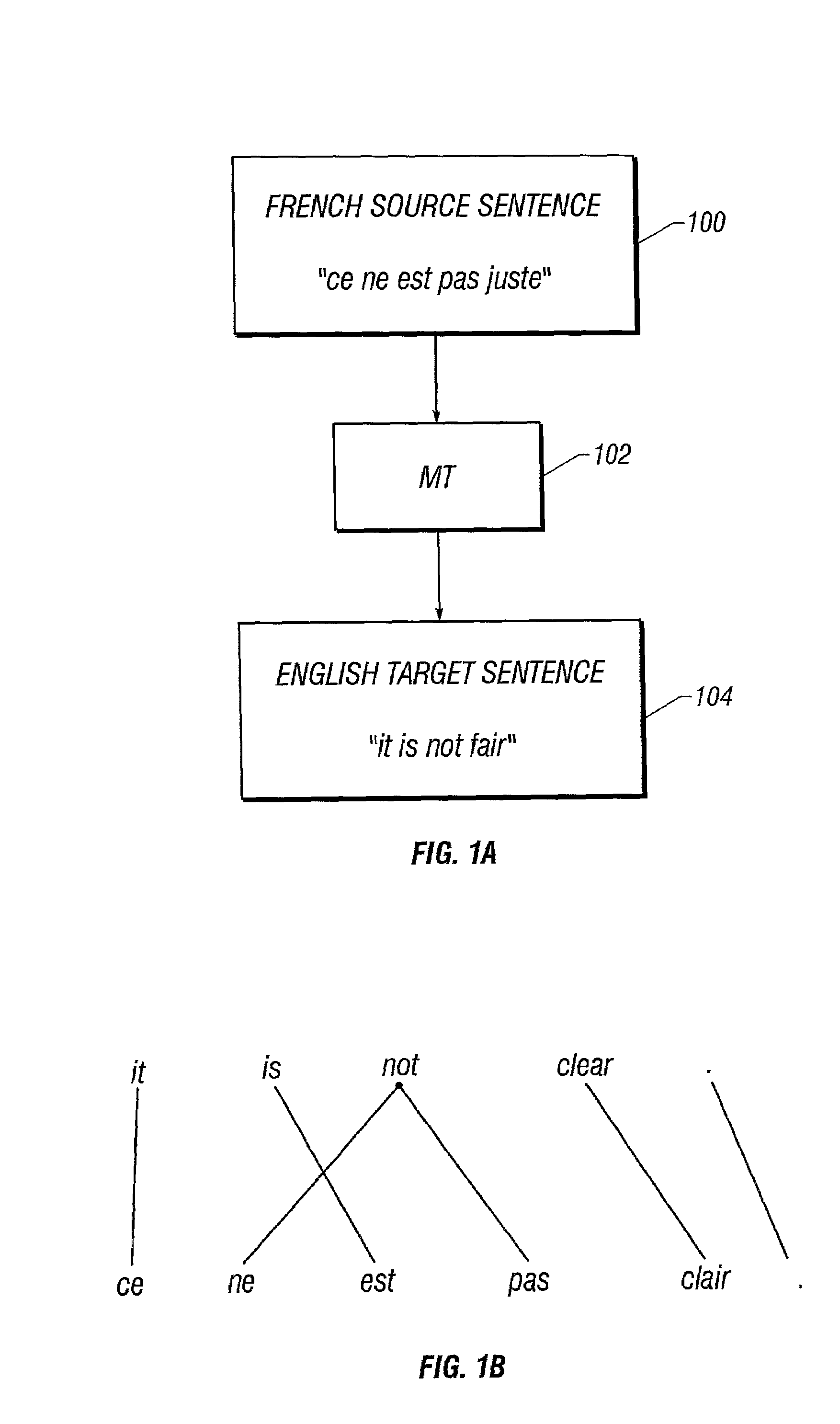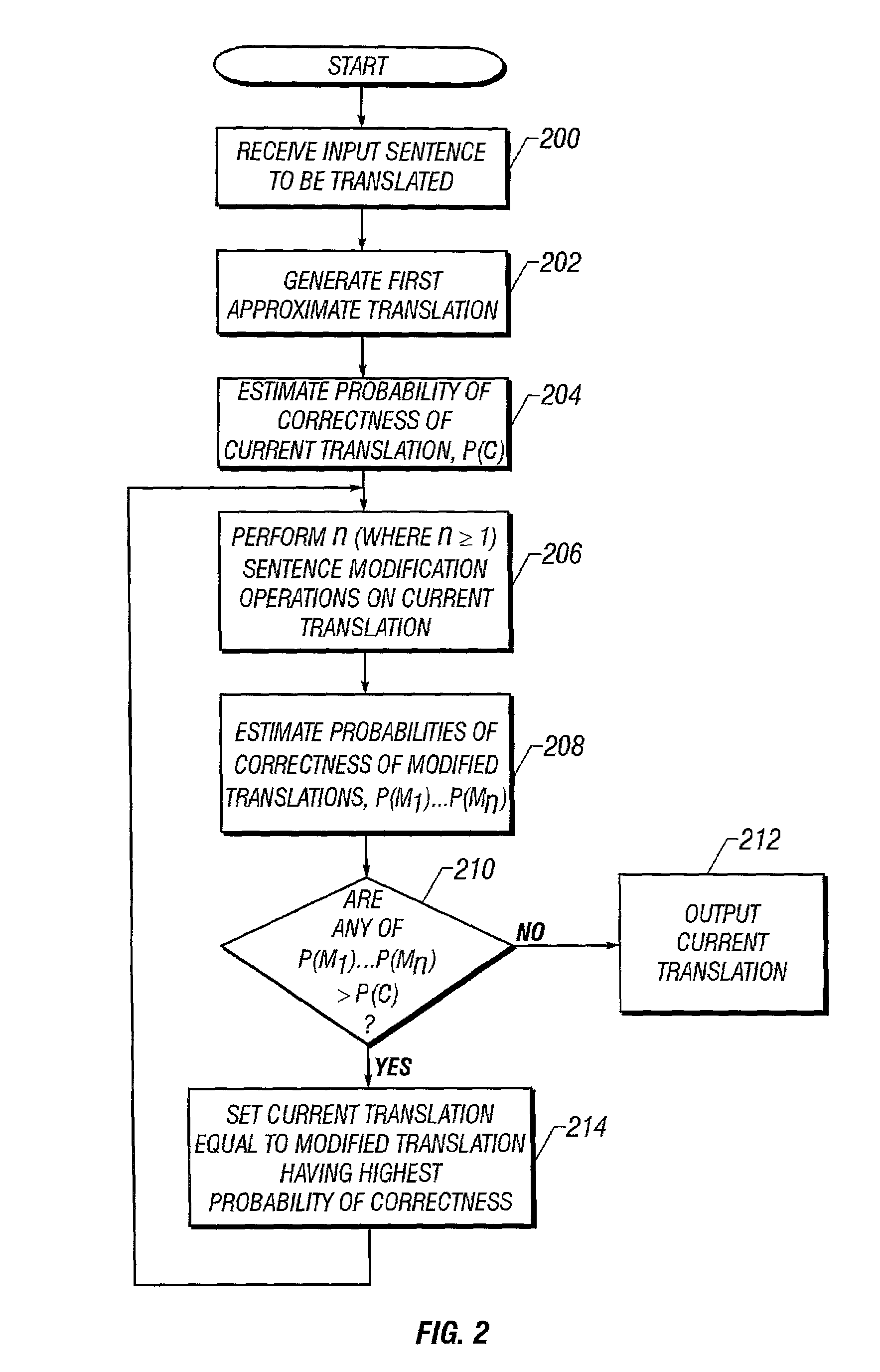Machine translation techniques
a machine translation and machine technology, applied in the field of computational linguistics, can solve the problems of high cost, large potential solution space such as used by stack decoders, and achieve the effect of improving mt quality
- Summary
- Abstract
- Description
- Claims
- Application Information
AI Technical Summary
Benefits of technology
Problems solved by technology
Method used
Image
Examples
Embodiment Construction
Greedy Decoder
[0056]A statistical MT system that translates, for example, French sentences into English, can be divided into three parts: (1) a language model (LM) that assigns a probability P(e) to any English string, (2) a translation model (TM) that assigns a probability P(f|e) to any pair of English and French strings, and (3) a decoder. The decoder takes a previously unseen sentence f and tries to find the e that maximizes P(e|f), or equivalently maximizes P(e)·P(f|e).
[0057]Brown et al., “The mathematics of statistical machine translation: Parameter estimation”, Computational Linguistics, 19(2), 1993, introduced a series of TMs based on word-for-word substitution and re-ordering, but did not include a decoding algorithm. If the source and target languages are constrained to have the same word order (by choice or through suitable pre-processing), then the linear Viterbi algorithm can be applied as described in Tillmann et al., “A DP-based search using monotone alignments in stat...
PUM
 Login to View More
Login to View More Abstract
Description
Claims
Application Information
 Login to View More
Login to View More - R&D
- Intellectual Property
- Life Sciences
- Materials
- Tech Scout
- Unparalleled Data Quality
- Higher Quality Content
- 60% Fewer Hallucinations
Browse by: Latest US Patents, China's latest patents, Technical Efficacy Thesaurus, Application Domain, Technology Topic, Popular Technical Reports.
© 2025 PatSnap. All rights reserved.Legal|Privacy policy|Modern Slavery Act Transparency Statement|Sitemap|About US| Contact US: help@patsnap.com



